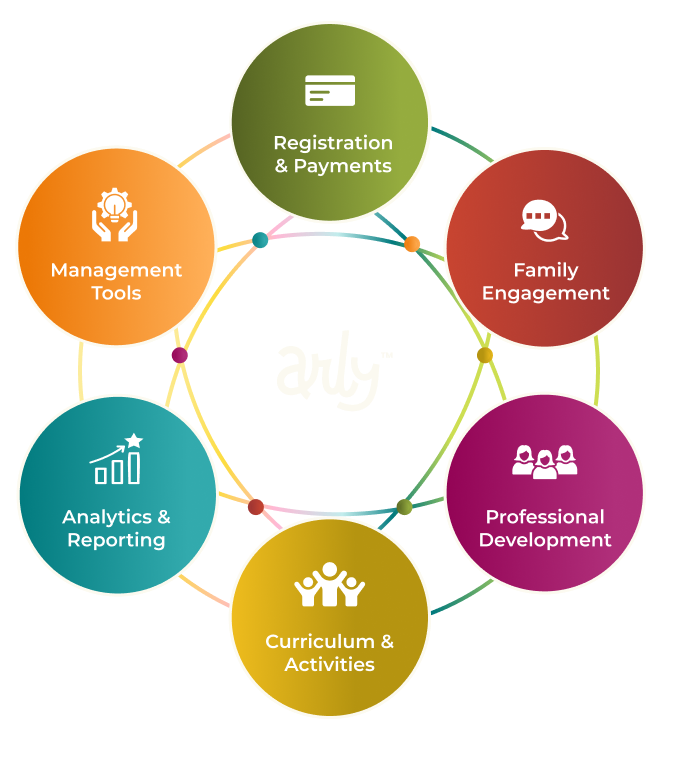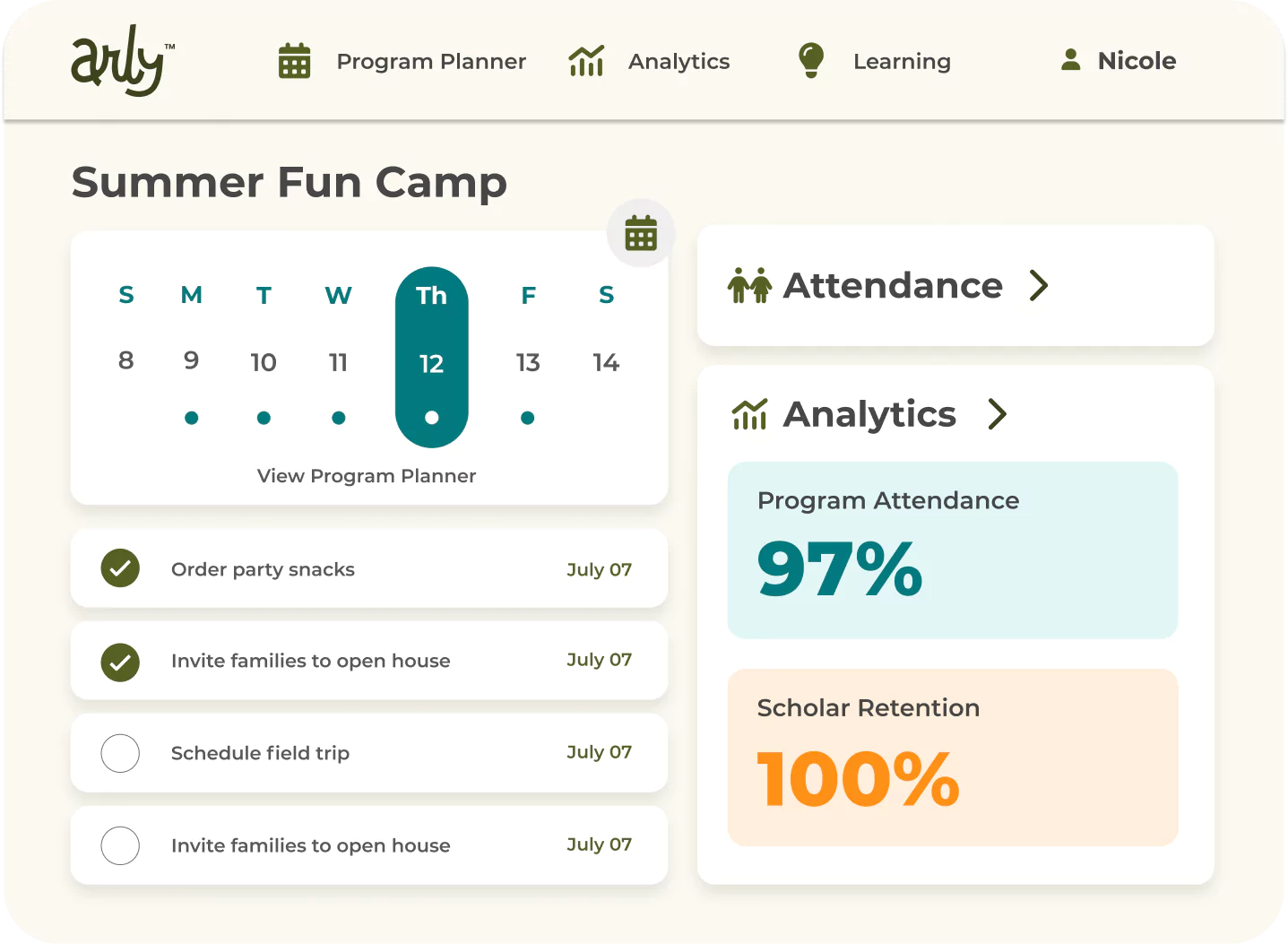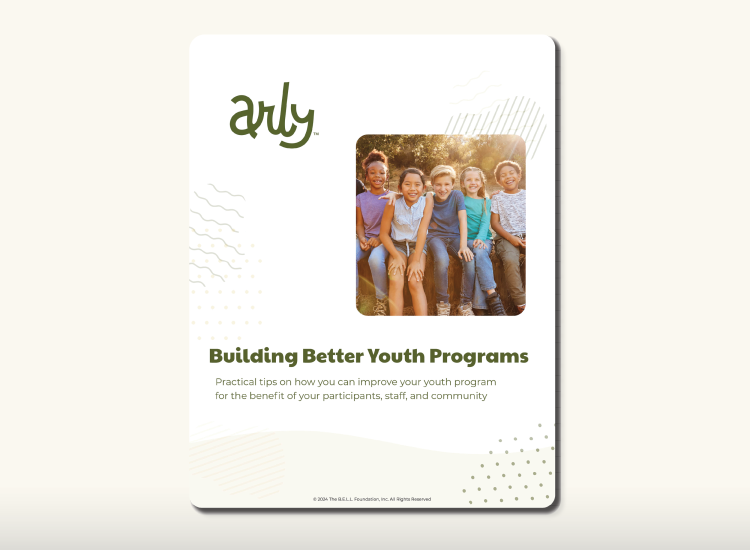The Results Are In! Measuring Student Success in Afterschool Programs
By Arly Communications on May 23, 2023
When you pour time, resources, and heart into an out-of-school time (OST) program, you want the positive impact it has to be clearly demonstrable. You can factor in various metrics as you assess your program’s success, such as attendance rates, staff satisfaction, and family engagement.
Although these are all great areas to consider, one area you should always pay close attention to is the outcomes of the kids in your program. Student success can speak louder than anything else when promoting your program and garnering support from funders and the community. So how can you assess student success in an OST program? Follow these four important steps:
1. Define success at the outset.
Before you can measure success, you have to define it. During your program planning, consider the purpose of your program, particularly regarding student outcomes. Understanding your mission and identifying anticipated results will help you determine the right measures of student success.
Your program is unique, so embrace that uniqueness in your goals and approach. And remember that student success isn’t just academic! You can also pay attention to other performance indicators, such as fewer behavioral referrals, an increased interest in learning, or stronger social emotional skills. These are all major wins that are worth aiming for and celebrating.
2. Make your goals SMART.
As you set your goals, move beyond generalities. Statements like “We want students to develop their math skills” or “Kids should get more excited about science” are too vague to be assessed. It’s fine to have some overarching goals that are a bit more general, but you should develop learning objectives for your program that are as clear as possible.
Try making your goals SMART, which stands for:
- Specific
- Measurable
- Attainable
- Relevant
- Time-Bound
For example, a SMART goal might look like this: “By the end of the program, students should be able to identify the relevant information from a math word problem and use the correct operations to set up and solve the problem.”
A science-focused summer or afterschool program may set a goal like this: “After the first unit, kids should be able to share (verbally or in writing) about an important role the scientific community plays in the world today.”
3. Determine the best method(s) of measurement.
It's easy to say: “Our program is making a difference in kids’ lives” or “Students are making significant strides in reading skills.” But can you back those claims up with data? You can move beyond subjective claims by actually measuring student success. Revisit your goals to determine the best way to measure progress and achievement.
Test scores are a popular option for assessing academic attainment, but you should also consider less conventional metrics that might be a better fit or helpful addition to test scores.
As a contributor to Education Week points out, “Though achievement-based evaluation is an important and influential way of measuring school effectiveness, treating test scores as the singular variable that predicts or determines school quality may make teachers and leaders overlook other factors that may paint a more complete picture of how well schools educate and serve their students.” The same can be said of OST programs.
What do some of these less conventional methods of measurement look like? Consider asking staff, parents, and guardians to evaluate students’ behavior and attitudes toward learning throughout the program. You can also ask older students to complete self-assessments at the end of the program. Provide a rating scale or rubric to make observations more concrete and measurable.
Whatever method you use, be sure to perform a diagnostic assessment at the very start of the program so you have an established baseline for each child. This way, you can see how far kids have come by the end of the program or whenever you decide to measure progress.
4. Consider the bigger picture.
It can be difficult to get the full picture when measuring student success. Keep in mind that even if the learning gains you witness in your program seem minor, they can have a ripple effect.
For example, a summer program may seem to move the needle on learning just a bit, but if it prevents summer learning loss or builds learning confidence and stamina, students can make greater strides when they return to school. An afterschool program may not appear to make much of a difference in standardized test scores. However, if it gets kids more interested in the arts, it may provide a positive outlet that improves their mental well-being and behavior for years to come.
If you want a fuller picture of student achievement and well-being over time, consider partnering with a school. By combining forces, you can maximize your impact and more accurately measure student success.






%20(42).png)

%20(33).png)
%20(48).png)
%20(8).png)